The humble fried egg, a culinary staple revered for its simplicity and versatility, holds a prominent place in the culinary repertoire of home cooks and professional chefs alike. Mastering the art of frying the perfect egg requires a harmonious balance of technique, patience, and an understanding of the intricate interplay between heat and egg components. This comprehensive guide will delve into the intricacies of egg frying, providing invaluable insights and practical tips to elevate your fried egg game to new heights.
The Ideal Temperature for Frying an Egg
The optimal temperature for frying an egg is a subject of culinary debate, with varying opinions among seasoned chefs and home cooks. However, the consensus lies within a range of medium-low to medium heat. This temperature range allows for even cooking, preventing the egg from overcooking or burning while ensuring a tender and flavorful result.
The Science Behind the Perfect Fried Egg
Understanding the science behind egg frying is crucial for achieving consistent success. When an egg is heated, the proteins in the egg white coagulate, causing it to solidify and turn opaque. The yolk, on the other hand, contains more fat and coagulates at a higher temperature, resulting in a runny or firm yolk depending on the cooking time.
Essential Tips for Frying the Perfect Egg
-
Choose the Right Pan: Opt for a non-stick skillet or a well-seasoned cast-iron skillet to prevent the egg from sticking.
-
Use Fresh Eggs: Fresh eggs yield better results, as older eggs may have a thinner white and a less flavorful yolk.
-
Bring Eggs to Room Temperature: Allow eggs to come to room temperature before frying. This helps them cook more evenly.
-
Heat the Pan Gradually: Gradually heat the pan over medium-low to medium heat to prevent the egg from burning.
-
Add Fat to the Pan: Add a small amount of butter, oil, or bacon fat to the pan to prevent the egg from sticking.
-
Crack the Egg Gently: Crack the egg into a small bowl first to prevent shell fragments from falling into the pan.
-
Slide the Egg into the Pan: Gently slide the egg from the bowl into the heated pan.
-
Cook to Desired Doneness: Cook the egg to your desired doneness, whether it’s sunny-side up, over easy, over medium, or over hard.
-
Season to Taste: Season the egg with salt and pepper to taste.
Troubleshooting Common Fried Egg Issues
-
Runny White, Overcooked Yolk: The pan was too hot. Reduce the heat and cook for a shorter amount of time.
-
Burnt Egg: The pan was too hot, or the egg was cooked for too long. Reduce the heat and cook for a shorter amount of time.
-
Egg Sticks to the Pan: The pan was not properly seasoned, or not enough fat was used. Use a non-stick skillet or a well-seasoned cast-iron skillet, and add a small amount of fat to the pan before cooking the egg.
Frying the perfect egg is an art form that requires practice and attention to detail. By following the guidelines outlined in this comprehensive guide, you can master the technique and consistently create delectable fried eggs that will impress your family and friends. Remember, the key to success lies in understanding the science behind egg frying, using the right tools, and practicing patience. With each attempt, you will refine your skills and elevate your fried egg game to new heights.
Find a RecipeSearch our recipes




Discover how simple it is to prepare flawless fried eggs each and every time by bringing your favorite breakfast joint into your house.
There’s something special about preparing breakfast and sharing it with loved ones. It’s one of my favorite meals of the day since it’s always delicious and so comforting. Check out my Shakshuka or a Dutch Baby recipe if you’re looking to try some new, exciting recipes.
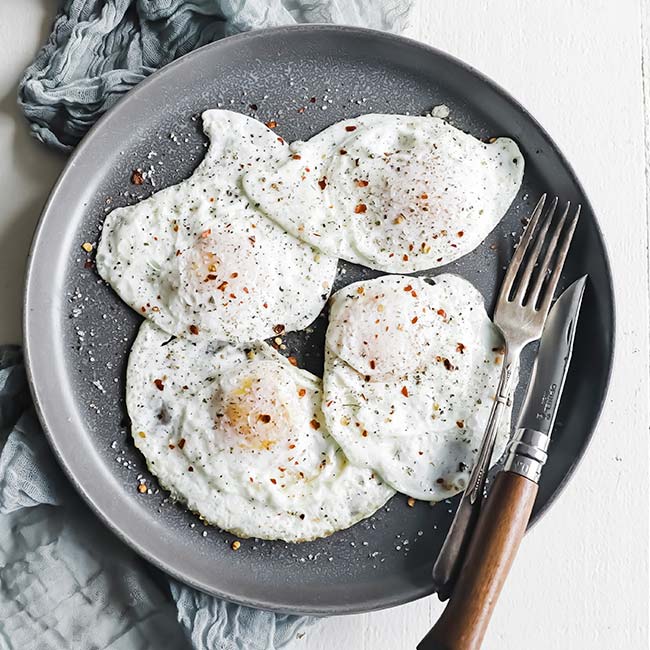
One of the most basic and fundamental recipes that exists is fried eggs. In the culinary arts, cooking with eggs is fundamental, and frying eggs is a fantastic and simple way to make and consume them. Simply put, frying eggs is heating eggs in a small amount of fat in a hot skillet until the internal yolk temperature reaches the desired level.
How to Fry an Egg
Take note of these detailed directions on how to fry an egg:
Make sure the egg in the bowl is free of shells before cracking it. Set aside.
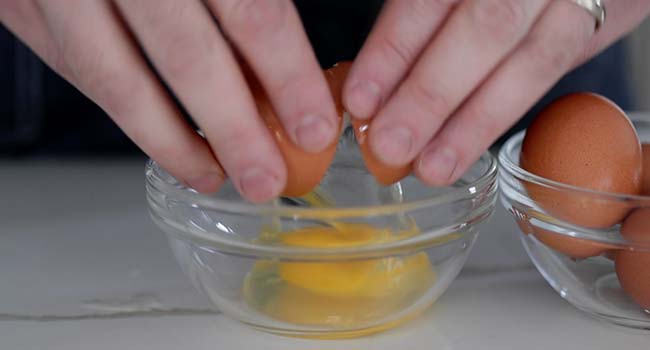
After that, add some fat to a small nonstick skillet and warm it for about a minute on low to medium heat.
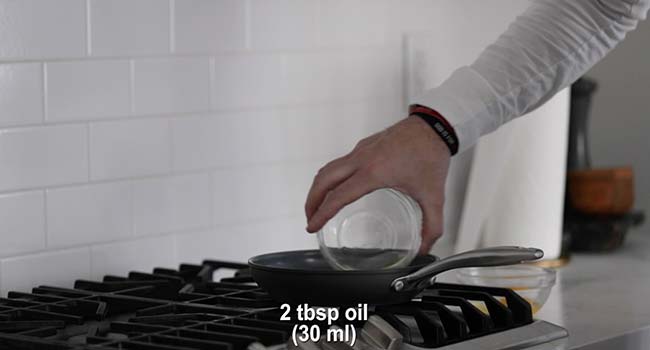
When the egg cracks, add it to the fat and cook it until it’s done.
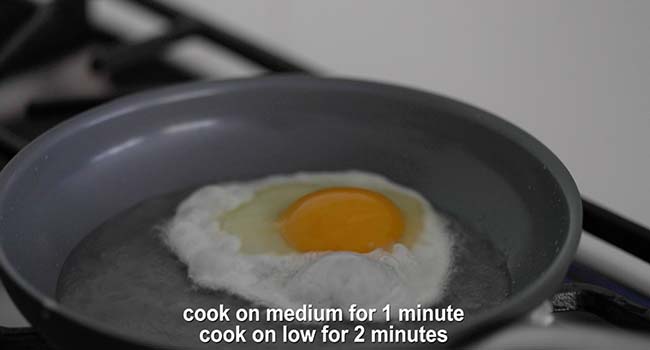
Season with salt and pepper and serve.
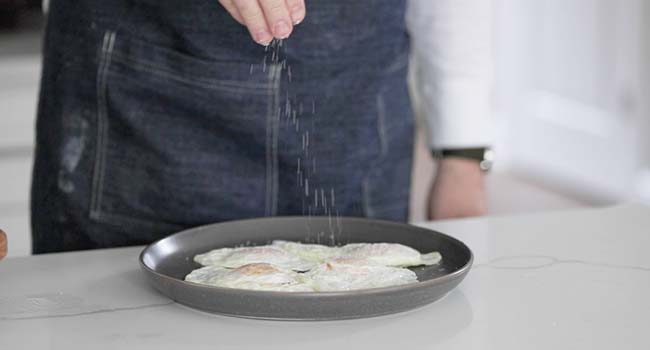
Prepare Ahead: These should be consumed right away after cooking.
Reheating: Although reheating these is difficult, you can try microwave cooking them or gently frying them in hot oil.
The Biggest Mistakes Everyone Makes When Frying Eggs
FAQ
What temperature do you fry an egg?
Should you fry eggs on low heat?
Do you fry eggs on medium or high?
Is it best to fry eggs at room temperature?
How hot should fried eggs be?
As a general rule, fried eggs are cooked over medium heat. The pan should just be hot enough that there’s a little sizzle when the egg hits the skillet. If you’re a fan of crispy fried edges, you may like to increase the heat to medium-high to achieve cratered, bubbly whites with crispy brown edges.
What is the best way to cook eggs?
The best way to prepare eggs are shorter and lower-heat cooking methods, as they cause less cholesterol oxidation and help retain most of the egg’s nutrients. For this reason, poached and boiled (either hard or soft) eggs may be the healthiest to eat. Also, these cooking methods, don’t add any unnecessary calories, like oil.
How long do you fry an egg in a frying pan?
Over Medium Egg – Cook at low to medium heat in a pan with oil for 90 seconds on each side. Over Hard Egg – Cook at low to medium heat in a pan with oil for 2 to 2 ½ minutes per side. Follow along with these step-by-step instructions for how to fry an egg: Crack an egg into a bowl and make sure there are no shells in it. Set aside.
How do you cook a fried egg?
Top with salt and pepper to taste while the egg is still hot. Fry your egg in hot oil for a decadent, golden brown crust and runny yolk. To do so, heat up 4 tablespoons (60 ml) of olive oil instead of 1 or 1/2. When you crack the egg in, turn the pan so that the hot oil and egg slid to the edge of the pan, which is still over the heat.
